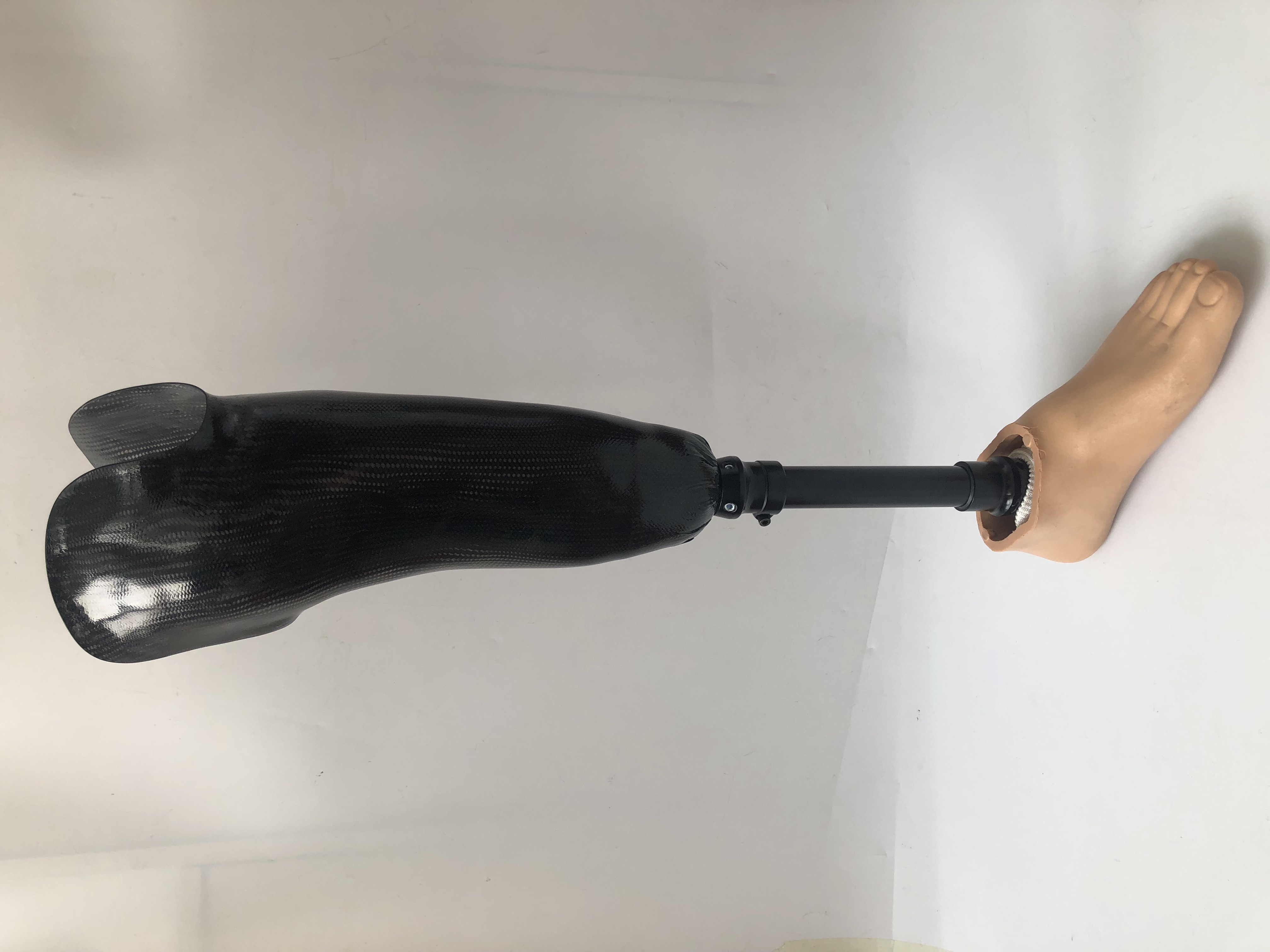Prosthetic care and maintenance
Lower limb amputees need to wear prosthetics frequently. In order to maintain the normal function of the prosthesis, use it flexibly and prolong the service life, the following maintenance items should be paid attention to on a daily basis(1) Maintenance and maintenance of the receiving cavity
(1) Keep the inner surface of the receiving cavity clean. The suction socket is in direct contact with the skin. If the inner surface of the socket is not clean, it will increase the risk of skin infection of the residual limb. Therefore, amputees should wipe down the inside of the socket every night before going to bed. It can be wiped with a hand towel soaked in light soapy water, and then dried naturally. For the electromechanical prosthesis receiving cavity, water and humid air should be avoided, and it should be kept dry. The contact surface between the electrode and the skin is easy to stick to dirt and rust, and attention should be paid to keep the surface clean. Prevents faults and short circuits that are easily caused by wire breakage.
(2) Pay attention to cracks in the receiving cavity. Tiny cracks develop on the inner surface of the resin receptacle, sometimes injuring the skin of the stump. It is easy to crack after the ISNY socket appears crack. At this time, when there is dirt attached to the receiving cavity or the resin deteriorates, uneven fatigue marks often appear on the inner surface of the smooth receiving cavity, especially when this happens on the upper end of the inner wall of the thigh suction receiving cavity, it will hurt the perineum. skin, you should pay special attention.
(3) When the receiving cavity feels loose, first use the method of increasing the residual limb socks (no more than three layers) to solve it; if it is still too loose, stick a layer of felt on the four walls of the receiving cavity to solve the problem. If necessary, replace with a new socket.
(2) Maintenance and maintenance of structural parts
(1) If the joints and joints of the prosthesis are loose, it will affect the performance and produce noise. Therefore, the knee and ankle shaft screws and the fixing screws and rivets of the belt should be checked frequently and tightened in time. When the metal shaft is inflexible or makes noise, it is necessary to add lubricating oil in time. After getting wet, it should be dried in time and oiled to prevent rust.
(2) The power supply and electrical system of the myoelectric prosthesis avoid moisture, impact and sticky dirt. For complex and sophisticated electric prosthetic hands, professional maintenance personnel should be found.
(3) When there is an abnormal sound, indicating that the prosthetic component is damaged, the cause should be found out in time, appropriate maintenance should be carried out, and if necessary, go to the artificial limb rehabilitation center for repair. Especially when using skeletal lower extremity prostheses, the joints and connectors should be overhauled in time, and it is best to go to the prosthetic rehabilitation center for overhauls on a regular basis (such as once every 3 months).
(3) Maintenance of decorative coats
The front part of the knee joint of the foam decorative jacket of the skeletal thigh prosthesis is the most likely to be ruptured, and the user should pay attention to repair it in time when there is a small rupture. It can be reinforced by sticking cloth strips on the inside to maximize its service life. In addition, if you wear socks with a short waist, the sock opening of the calf is easy to be cracked by the rubber band. Therefore, even if wearing a calf prosthesis, it is best to wear socks that are longer than the knee.
Taking the maintenance and maintenance of electric prostheses as an example, the requirements are as follows:
①The prosthesis cannot be overloaded during use to prevent damage to the components;
② Those who do not understand the operator shall not move;
③ Do not disassemble the parts casually;
④ If it is found that there is noise or abnormal sound in the mechanical part, it should be inspected, repaired and replaced in detail;
⑤After one year of use, add lubricating oil to the transmission part and the rotating shaft:
⑥ The battery voltage shall not be lower than 10V, if the prosthesis is found to slow down or cannot be started, it should be charged in time;
⑦Prevent the electrical component connecting wires from crossing and kinking, avoiding insulation damage and leakage or short circuit.
(4) In order to ensure the safe use of prosthetic limbs, the company requires prosthetic limb users to come to the factory for a follow-up examination once a year.
If the prosthesis is faulty, it must be repaired in time, and do not disassemble it by yourself. For specific products, please read the product instruction manual in detail.
Post time: Jul-11-2022


